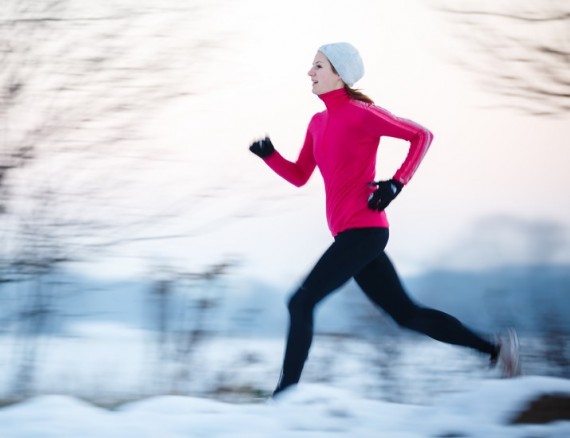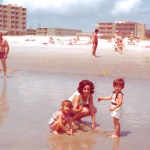Cold Weather Workouts
 Back in the day there really weren’t many options and most of us actually used (gasp) sweatpants and cotton tees. I will never forget taking a “Learn to Run” course many moons ago. I was living in Alberta, Canada and the course started the first week of January and was in the evenings. Now if you’ve never been that far North, let me tell you that January and February are THE worst months for snow, cold and dark. So I really picked a great time to start a new fitness habit (dripping with sarcasm). My “gear” consisted of my old runners from high school, and I looked like the Michelin (wo)man wearing at least 10 layers of clothing (remember this was a beginner program, there wasn’t a lot of clothing options to begin with and I didn’t know anything about dressing for exercise in the cold). We would come back from our 30-minute runs and have frost on our eyelashes and hair. Many of us resorted to the warm luxury of balaclavas. Go ahead and laugh because the picture in your head is exactly how I looked and add to that the effort of running on snow and ice with all those clothes.
Back in the day there really weren’t many options and most of us actually used (gasp) sweatpants and cotton tees. I will never forget taking a “Learn to Run” course many moons ago. I was living in Alberta, Canada and the course started the first week of January and was in the evenings. Now if you’ve never been that far North, let me tell you that January and February are THE worst months for snow, cold and dark. So I really picked a great time to start a new fitness habit (dripping with sarcasm). My “gear” consisted of my old runners from high school, and I looked like the Michelin (wo)man wearing at least 10 layers of clothing (remember this was a beginner program, there wasn’t a lot of clothing options to begin with and I didn’t know anything about dressing for exercise in the cold). We would come back from our 30-minute runs and have frost on our eyelashes and hair. Many of us resorted to the warm luxury of balaclavas. Go ahead and laugh because the picture in your head is exactly how I looked and add to that the effort of running on snow and ice with all those clothes.
Thank goodness we now have a plethora of options for outdoor workout gear that is no longer bulky nor traps sweat and cold due to the new wicking materials. We can even look quite fashionable as we struggle through our colder workouts. Here are some tips for dressing for the cold:
Bottom Layer – The key to success; start with a base layer of wicking tights and a long sleeve top, something that could be worn on its own if need be.
Top layer – Wear pants and a pullover or jacket that is thicker but of material that insulates without bulking so you can still move easily. Another option is to do 2 layers on top of the base using thinner but progressively looser clothes. (a long sleeve tee with a light fleece for the top and looser pants for bottom).
If necessary add a wind-breaking layer such as a light, thin nylon jacket and track pants.
Cover your Head – Make sure to in the very least cover the ears to avoid frostbite, use knit or wool caps or in very cold climates, a balaclava.
Neck– Avoid scarves as they are bulky, cumbersome and can be a safety issue. Opt for turtle neck tops (zips are great because you can quickly cool off without having to take off that layer), or use a neck warmer.
Hands – Choose lightweight gloves or mitts. Depending on your activity you may want to get the combo mitt/glove that allows you to pin back the tops of the mitt to free up your fingertips.
Shoes – You will still want to use dedicated outdoor running or workout shoes for proper function and support of your feet. If you live in very snowy or icy climes you can now get slip on treads for the soles of your sneaks (no longer do you have to put screws into the soles of your runners).
Bring tissues for runny eyes and nose.
At night – wear reflective clothing or vest and even a blinking light – BE SEEN
Daytime – sunglasses especially if there’s snow
Drink water – you can still get dehydrated
Longer warm-up – Don’t break into a sprint as soon as you step out the door or bang out burpees – your muscles will be cold and tighter making them more prone to injury so allow them to warm up and become pliable.
Cool down – allow time to cool off to avoid getting overheated once you go back indoors
Safety – partner up and keep an eye on each other, tell people where you’re running, and approximately how long you‘ll be. Carry a phone just in case.
For more tips, click here.



















